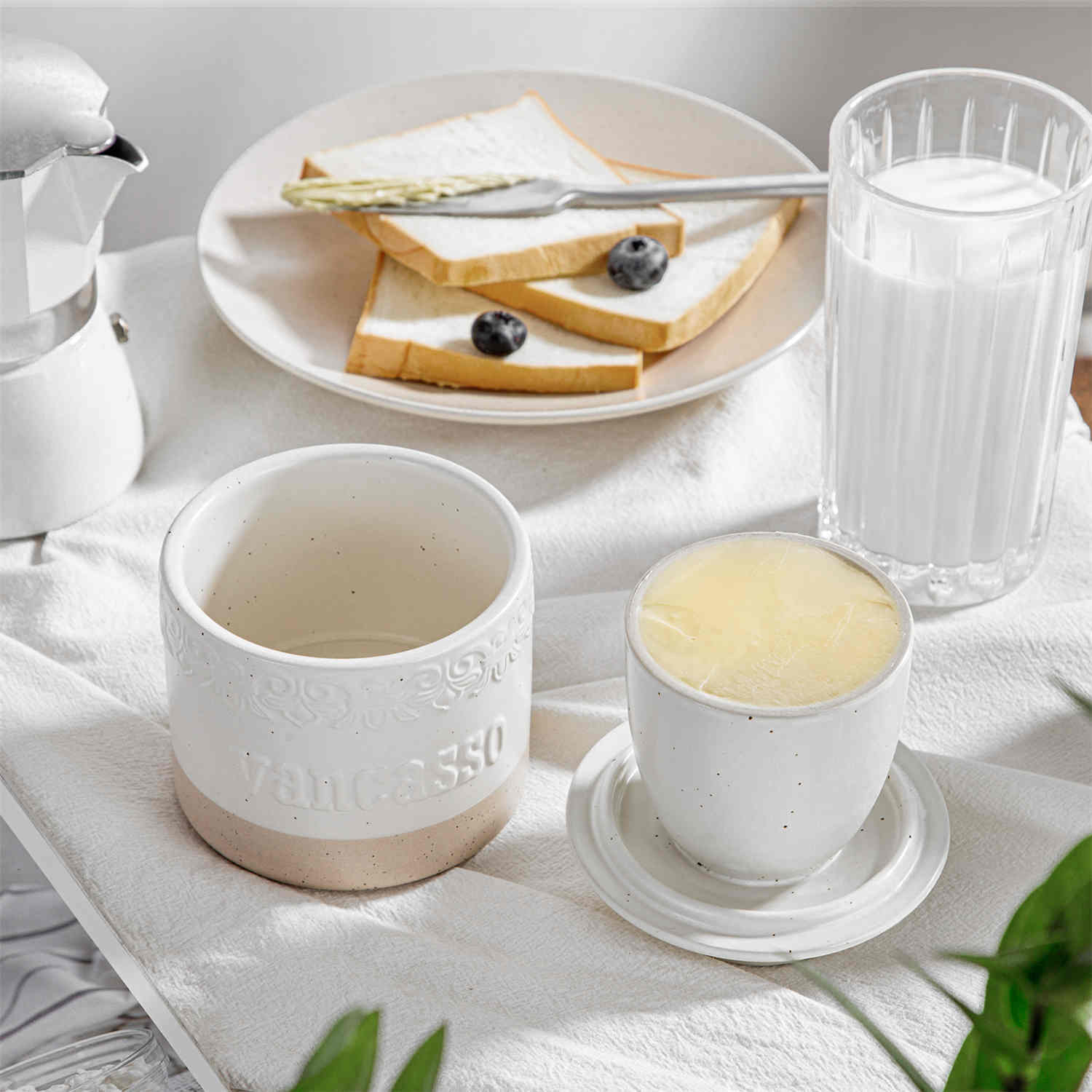Unveiling the Secret of Farmhouse Butter Crocks: Your Kitchen's Hidden Gem!
In the realm of kitchenware, farmhouse butter crocks stand out as a charming reminder of simpler times. These delightful pieces, often crafted from stoneware or ceramic, have found their way back into modern kitchens, merging functionality with nostalgia. Historically, butter crocks played a crucial role in farmhouse kitchens, allowing families to store and serve butter at the perfect temperature. As more people seek to integrate traditional tools into their culinary practices, the farmhouse butter crock has emerged as a beloved item, not just for its practical use but also for the warmth it brings to the kitchen. Imagine reaching for a perfectly spreadable pat of butter, knowing it’s been kept fresh and flavorful in a beautiful, rustic crock. This article delves into the world of farmhouse butter crocks, exploring their significance, uses, and the joy they can bring to your cooking experience.

What is a Farmhouse Butter Crock?
A farmhouse butter crock is a specialized container designed to store butter while keeping it fresh and spreadable. Typically made from materials like stoneware or ceramic, these crocks feature a lid that helps seal in moisture and flavor. Unlike standard butter dishes, which may require refrigeration, butter crocks allow you to keep butter at room temperature, making it easily accessible and ready to use. The design often includes a water reservoir at the bottom, which creates an airtight seal when filled with water, helping to preserve the butter's quality. This unique feature not only keeps the butter fresh for longer but also prevents it from becoming rancid—a common issue with regular butter dishes. Many people, including my friend Jane, swear by their butter crock, claiming it has transformed their breakfast routine. Instead of wrestling with hard, cold butter from the fridge, she enjoys a perfectly spreadable topping on her morning toast.
Historical Background of Butter Crocks
The use of butter crocks dates back centuries, originating in farmhouse kitchens where butter was a staple food item. Traditionally, these crocks were used by farmers who needed a reliable way to store and serve butter produced from their own dairy cows. As butter-making techniques evolved, so did the design of the crocks, incorporating various materials and styles according to regional preferences. In some cultures, butter crocks were beautifully decorated, reflecting local artistry, while in others, practicality took precedence. Over time, these functional items became cherished household objects, often passed down through generations. My grandmother had a lovely butter crock that she used daily, and I remember the rich, creamy taste of the butter it held—something that store-bought versions simply can’t replicate. Today, as the trend for homemade and artisanal foods grows, farmhouse butter crocks are seeing a revival among those who appreciate their historical significance and rustic charm.
How to Use a Farmhouse Butter Crock
Using a farmhouse butter crock is simple and rewarding. Here’s a step-by-step guide to get you started: First, soften your butter at room temperature until it’s easy to spread. Next, using a spatula, pack the butter into the crock, pressing it down to eliminate any air pockets. Fill the bottom of the crock with fresh water, about halfway, ensuring the butter is seated above the water line. This creates a seal that will keep your butter fresh and flavorful. Store the crock in a cool, dry place, away from direct sunlight. Be sure to change the water weekly to maintain freshness. Caring for your butter crock is equally important. Hand wash it with mild soap and water, avoiding harsh chemicals that can damage the surface. With these simple steps, you’ll enjoy delicious, spreadable butter every day!
Benefits of Using a Butter Crock
The advantages of using a farmhouse butter crock extend beyond mere aesthetics. One of the most significant benefits is the ability to maintain butter's ideal spreadability. Unlike butter stored in the fridge, which can become hard and unyielding, the crock keeps it at a perfect consistency for easy application. Moreover, using a butter crock helps reduce waste, as the airtight seal prevents spoilage and rancidity. Many users, like my friend Tom, have noticed that their butter lasts much longer in a crock compared to traditional storage methods. Additionally, the rustic design of butter crocks adds a touch of charm to any kitchen, serving as both a functional tool and a decorative piece. Whether you’re hosting a brunch or simply enjoying breakfast with family, a butter crock can elevate the dining experience.
Choosing the Right Butter Crock
Selecting the right farmhouse butter crock involves considering several factors. First, think about size; a larger crock is ideal for families or those who frequently use butter, while a smaller one may suit individual needs better. Material is also crucial; stoneware and ceramic are popular choices for their durability and aesthetic appeal. When it comes to design, choose a style that complements your kitchen décor—whether you prefer a classic, rustic look or something more contemporary. Don’t forget to consider ease of cleaning and maintenance, as some materials may require more care than others. Ultimately, choosing a butter crock that fits your personal preferences will enhance your experience and encourage you to use it regularly.
Embracing Tradition with Farmhouse Butter Crocks
Farmhouse butter crocks are more than just kitchen tools; they are a testament to a way of life that values tradition, quality, and the joy of homemade food. By incorporating a butter crock into your kitchen, you not only enhance your culinary experience but also bring a piece of history into your home. The benefits of using a butter crock— from improved spreadability to reduced waste—make it a worthwhile addition. So why not try one for yourself? You may just find that a simple crock can transform your butter experience and add a delightful touch of charm to your kitchen.



